Rocks, rocks, and more rocks. Everywhere I looked, Malta’s indigenous wheat-colored limestone dominated the landscape. Roads, houses, hospitals, government buildings, shops, and forts were crafted from the monotonous sedimentary rock, as if the island had regurgitated its innards into piles that masons crafted into structures on the spot.

I was puzzled by the poor condition of many buildings. Edges of the blocks were eroding and pock marks were wearing into the face of the unsealed limestone. Wooden balconies slumped from the facade, in imminent danger of collapse. But the more I learned about the history of Malta, the more I came to believe that these structures were more sturdy and enduring than they appeared.
The earliest structures to be built of the endemic stone were pre-Bronze Age temples and underground sanctuaries. After several hundred years under Phoenician and Carthaginian rule, for which there is no remaining architectural record, the Romans arrived in 218 BC. For 1,100 years they embellished buildings with cornices, columns, and decorative tablets, and filled their homes with statuary, all carved from the local limestone.

Arabs who overthrew the Romans in 870 ruled for the next 200+ years, bringing with them the technology to carve large flat stone slabs, which were set upon stone arches with a slight incline to allow rainwater to flow off. Normans, Swabians, Angevins, and Aragonese followed, each leaving their marks on the culture, until the arrival of the Order of the Knights of St. John arrived in 1530. The Knights of Malta, as they are more commonly known, pursued an unparalleled building campaign, constructing fortified walls around the old capital of Mdina in the center of the island, as well as the new capital city of Valletta, which stands stately on a promontory at the entrance to Grand Harbour.
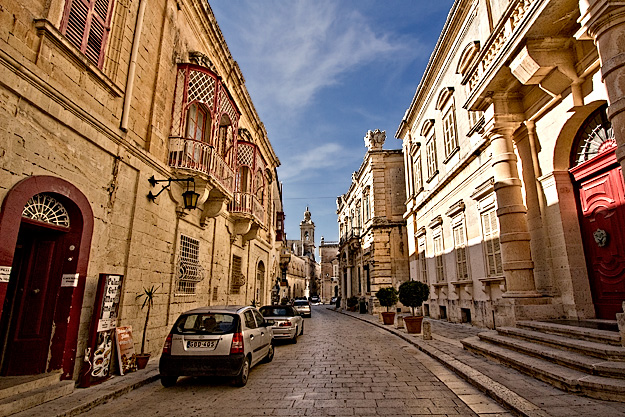
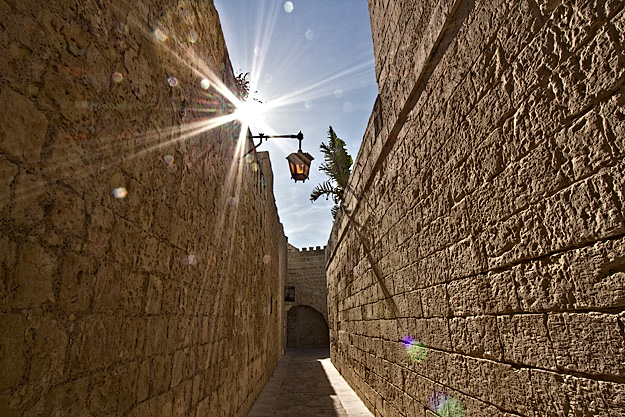
Though the Knights imported materials for decor, such as black basalt from Mount Etna for street paving and marble for columns, they predominantly employed the tawny white limestone for foundations, walls, and roofs. By the time Napoleon Bonaparte took the islands from the Knights in 1798, Valletta’s skyline was a striking tableau of limestone spires, domes, and palaces.

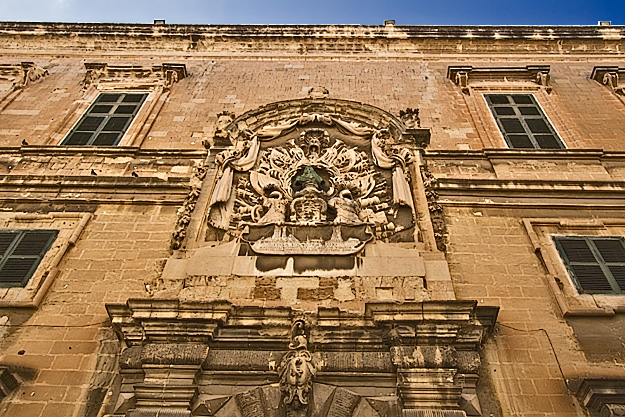
Finding life under French rule to be abhorrent, the Maltese turned for help to Britain, which ousted the French in two short years and brought the islands under the crown. The British studied why some of the 300-year old buildings looked brand new, while others had deteriorated badly. They discovered that stone from the quarries fell into three categories of varying quality, with the material from the lower level being the hardest and most durable. Unfortunately, the stone at the upper levels was more often utilized, as it was softer and easier to cut. The Brits erected a series of forts for defense of the islands, utilizing the higher quality limestone with reinforcing materials such as structural steel, masonry, cast iron, concrete, and Portland cement.
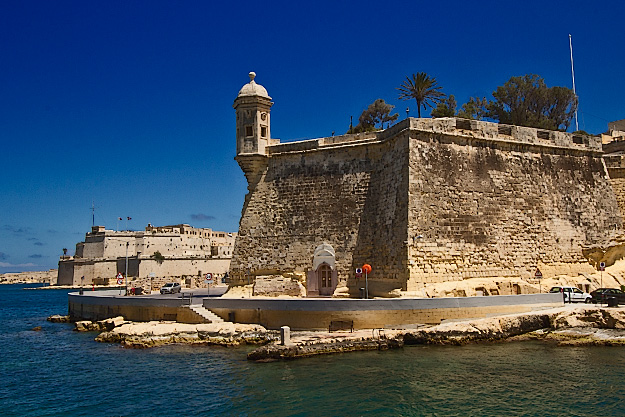
The stone used in earlier centuries may have been inferior in quality, however it did not necessarily mean that buildings would crumble, a fact that was put to the supreme test during World War II. Malta’s location in the middle of the Mediterranean meant that it was an ideal staging area for British campaigns into North Africa, as well as the eventual invasion of Italy. The day after Mussolini declared war on June, 10, 1940, Italian bombers attacked Valletta and its harbors. Later, during the summer of 1942, more than 6,700 tons of bombs were dropped onto the island for 154 straight days and nights; this ‘Siege of Malta,’ as it was later dubbed, would be the heaviest, sustained bombing attack of the war. Despite suffering 15,000 tons of bombs, 1,581 deaths, 3,780 injuries, and near starvation, the Maltese people refused to surrender. More than ten thousand buildings were destroyed or extensively damaged, but the limestone proved to be a formidable construction material that withstood the battering.
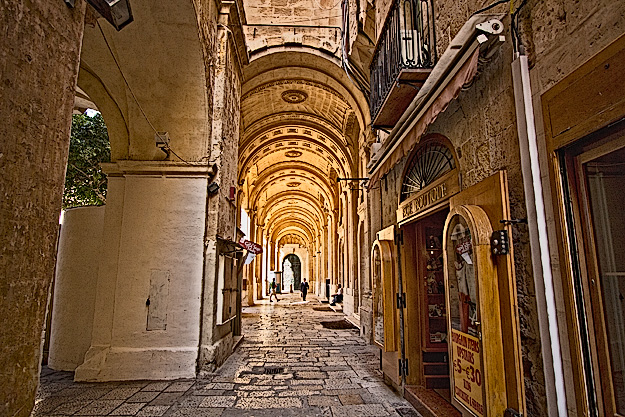
King George VI awarded the George Cross to the entire island of Malta in 1942, with the following statement to the island’s Governor :
“To honour her brave people, I award the George Cross to the Island Fortress of Malta to bear witness to a heroism and devotion that will long be famous in history.“
On December 8, 1943, U.S. President Franklin D. Roosevelt visited Malta when control of the entire Mediterranean was once again in the hands of the Allies. On behalf of the people of the United States, he spoke the following words of thanks:
“Under repeated fire from the skies, Malta stood alone, but unafraid in the center of the sea, one tiny bright flame in the darkness—a beacon of hope for the clearer days which have come. Malta’s bright story of human fortitude and courage will be read by posterity with wonder and with gratitude through all the ages. What was done in this Island maintains the highest traditions of gallant men and women who from the beginning of time have lived and died to preserve civilization for all mankind.“
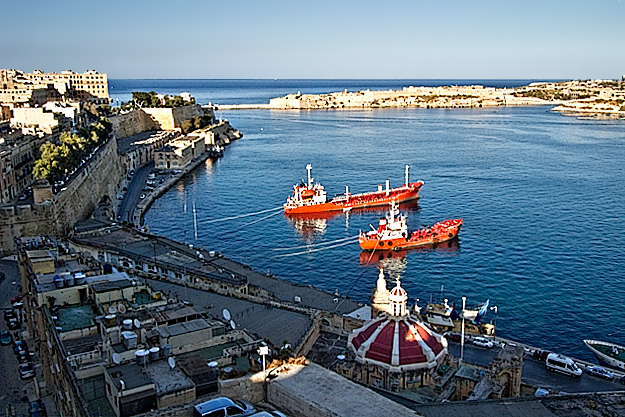
Once I knew the history of Malta, I looked at the island’s architecture through different eyes. Suddenly, those crumbling corners and pock marks were a rock solid badge of honor.

Such a beautiful place! Wish I could see it myself in the future. 🙂
I hope you get to visit one day, Miguel. There’s so much history an Malta that makes it a very intriguing travel destination.
Malta looks amazing!! GREAT photos! Love all the history information you highlight in the article, makes a visit so much more interesting. Malta is on our list and we can’t wait to visit! thanks!
Hi Lina: Thanks so much for the kind words. Glad to hear you’ve got Malta on your list. It’s a lesser known destination, but one that should not be missed.
I have always wanted to visit Malta, at least before i die, and this has just increased my desire to do so. Finances might be a challenge but i will surely visit one day. Great post Barbara!
You’re welcome, Vera. It’s well worth the price to visit, if only to see the architecture and experience the sense of history first hand.
What an incredible strong and proud society … thanks for filling in the blanks of what I didn’t know about Malta … this nation will be a priority for me once I get to Europe next year!
Hope you do make it to Malta, Heather. Malta is so interesting that it’s hard to understand why it’s not a better known tourist destination. I’m sure you’ll love it!
Beautifully crafted storytelling. Cannot wait to experience it next year. I will share with my husband so he can anticipate, too!
Thanks Lisa – I’m excited for you to see Malta. I know a year is a long time, but I’d be interested in hearing your impressions after your trip.
I have only visited once but fell in love with Malta! It is one of my favorite places in the world. Your pictures and text remind me why! Thank you!
You’re welcome, Ken. It’s easy to see how anyone could fall in love with Malta!
I feel like I just received one of the most interesting and succinct history lessons of my life. Thank you for taking the time to write with such clarity and heart. I have been following your blog for a short while and mostly looking in awe at your spectacular photos. I now look forward to going back, and forward, to read your well written posts. I know that when we are traveling and taking the time and effort to craft something of value to share online, it means a lot to hear from our readers and viewers. Please consider me among your readers and appreciative fans. Write on!
My dear Aysha: Thank you so much for taking the time to leave me such a lovely comment. Yes, this blog is a ton of work. I love it, but comments like yours make it all worthwhile. You’ve definitely made my day.
Thanks for explaining all of the historical details! Malta is such an interesting place!
Hi Lauren: It is definitely one of the most historic places I’ve ever visited. Hope you get to visit one day as well.